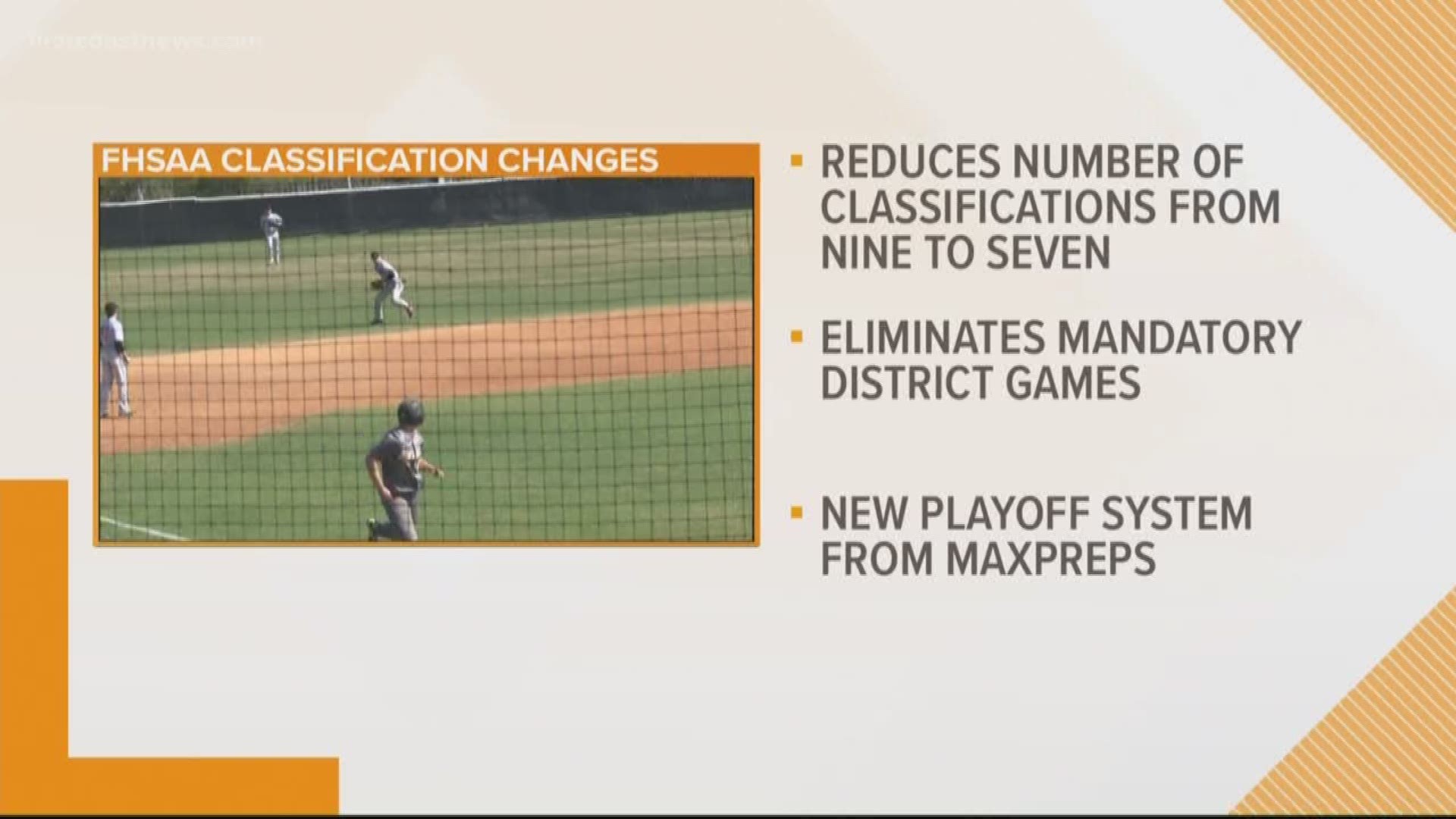From volleyball courts to baseball diamonds, big changes are coming to Florida high school sports next fall.
The Florida High School Athletic Association voted Monday to approve a new classification system for seven sports, which would take effect for the 2019-20 school year.
The new plan, which applies to boys and girls basketball, boys and girls soccer, baseball, softball and volleyball, ends mandatory district games during the regular season and installs an at-large system for playoff qualification.
The FHSAA board of directors ratified the measure on the second morning of its two-day meeting in Gainesville on a 12-3 vote. The approval was generally expected after the plan won the backing of the athletic directors advisory committee and executive director George Tomyn earlier in the month.
Details of the final plan remained largely the same as those presented to that committee. The key changes:
• The seven sports included in the plan will move to six classes beginning next fall, in addition to the unaffected rural class. For baseball, basketball, softball and volleyball, that represents a decrease from nine (eight plus rural) classes under the current system, the first time the FHSAA has ever reduced the number of classes in a major team sport.
• Every class in a sport would be divided into four regions and 16 districts, each with roughly the same number of teams. In most cases, five or six teams will compete in each district.
• In a major break from past practice, schools would no longer be required to schedule each of its district opponents during the regular season. This move is intended to give schools more flexibility in scheduling, and would theoretically reduce the number of lopsided games by enabling schools to replace district mismatches with more balanced contests against non-district opponents.
• Perhaps the most drastic change introduces an at-large playoff system based on the computer rankings of high school sports website MaxPreps.
Currently, district tournament champions and runners-up qualify automatically for the playoffs. Starting next fall, teams that win their district tournaments still reach the postseason, but the slots formerly reserved for runners-up — four per region, per class, per sport — now go to the region’s teams with the top MaxPreps ranking. For regional playoffs, district champions earn the top four seeds for the playoffs, while seed Nos. 5 through 8 receive at-large bids. Those will all be seeded by MaxPreps rankings.
Thus, teams with regular seasons that score well in the computer rankings could get a second chance if they stumble in the district tournaments. Teams that struggle during the regular season can still get into the playoffs, but they’ll need to win their district tournament, not just make the final — much like conference tournaments in the NCAA.
The impact could affect more teams than some would expect.
For instance, had the plan existed this season for volleyball, the only fall sport covered under the new rule package, District 3-8A runner-up Atlantic Coast would have missed out on the playoffs due to the Stingrays’ comparatively modest MaxPreps ranking, No. 202 in the state. That place would have gone to Gainesville Buchholz, which only went 10-12 while playing in a brutally tough District 4-7A but earned a MaxPreps ranking of No. 84.
Similarly, Yulee (19-5) would have qualified in place of Suwannee (5-13) in Region 1-6A, Bolles (12-16) would have been bumped out by North Bay Haven (20-4) in Region 1-5A and St. Johns Country Day (11-11) would have lost out to South Daytona Warner Christian for the last spot in Region 1-3A,
The reclassification does not involve football, which underwent its own restructuring in 2017, or individual sports like cross country, wrestling or tennis.
During the summer, the FHSAA had contemplated a plan that would have abolished districts and classified schools based on the MaxPreps rankings rather than classification, but that proposal failed to garner enough support from the athletic directors committee in September.
The FHSAA now must assign teams to their new classes and districts, both of which will generally be larger than in the past. And because the number of classes will be smaller, some schools could find themselves bumped up into a higher class.
Based on trends from 2017-18 student population reports, Bartram Trail, Nease and Oakleaf are all potential candidates to move into the classification for Florida’s largest schools. At present, Mandarin and Sandalwood are the only schools in that category.

